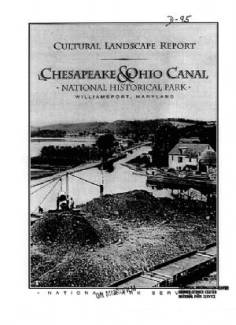Collection Name
About
CHAPTER 3
SIGNIFICANCE
The significance of the C&O Canal is tied to its role in the transportation, industrial and commercial history of both Williamsport and the entire canal.
The National Register of Historic Places stipulates that in order to be eligible for the National Register, a designed historic landscape must "possess the quality of significance in American history, architecture, archeology..., engineering and culture and integrity of location, design, setting, materials, workmanship, feeling, and association, and
A. be associated with events that have made a significant contribution to the broad patterns of our history; or
B. be associated with the lives of persons significant in our past; or
C. embody the distinctive characteristics of a type, period, or method of construction, or that represent the work of a master or that possess high artistic values, or that represent a significant and distinguishable entity whose components may lack individual distinction; or
D. have yielded or be likely to yield information important in prehistory or history."
The C&O Canal segment in Williamsport meets all the above criteria.
Criterion A
The landscape of the Williamsport segment of the C&O Canal contributes to the broad historic patterns associated with transportation, industrial development, and European immigration in the eastern United States during this period. Several factors contributed to the development of the Williamsport area as a significant center for transportation, industrial and commercial activities. Site specific natural features, such as the confluence of the Conococheague Creek and the Potomac River, a shallow portion of the river allowing a ford crossing, the availability of building materials, such as wood and stone, and buildable lands contributed to the development of Williamsport. A variety of inter-related transportation types and industries grew up around the Williamsport segment of the C&O Canal during its years of operation including canal boats, a ferry, the railroad, an electric trolley, and vehicular roads and bridges. Industries such as lumber and grain mills were established to take advantage of water-driven power sources; others, such as coal and lumber yards, furniture factories, warehouses, and wharves, were established in Williamsport, a convenient location for the railroad to unload raw materials and pick up finished goods to be transported to the markets in Washington, D.C.
The Media file for this resource exceeds 20MB. You may view the file at: Williamsport Cultural Landscape Report (part 2)
